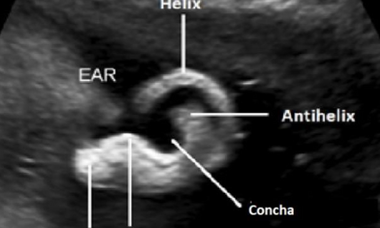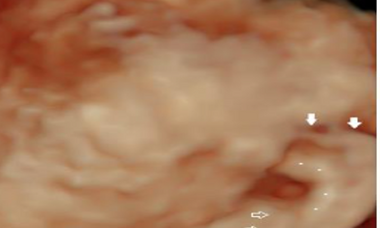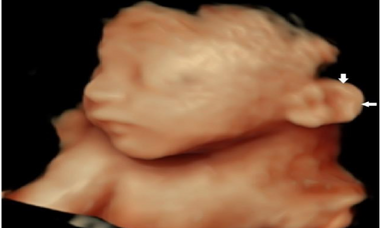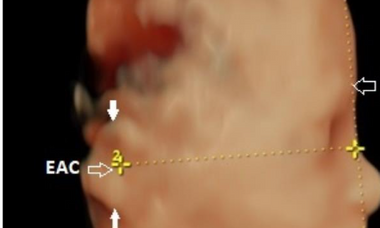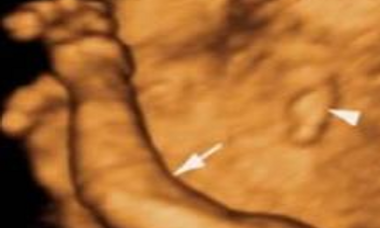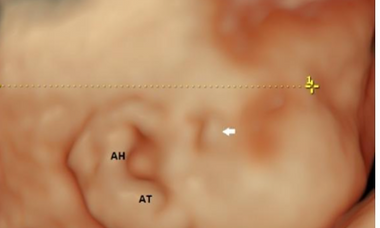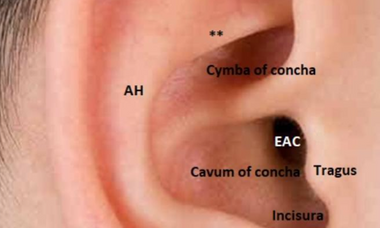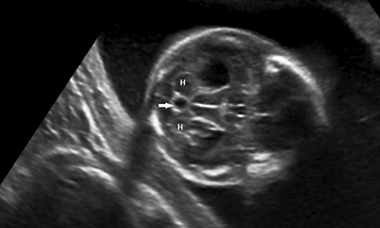Explore chapters relating to the ears.
Normal ear and its evaluation
The mammalian ear can be divided into three main parts: the outer ear, middle ear, and inner ear, all of which are required for effective hearing.
Abnormalities of the auricle’s shape
Learn more about abnormalities of the auricle’s shape.
Abnormalities of the auricle’s orientation
Learn more about abnormalities of the auricle’s orientation.
Abnormalities of the Auricles’s Position
Learn more about abnormalities of the auricles’s position.
Abnormalities of the Auricle’s Size and Number
The ear length is measured using electronic calipers from the superior helix to the inferior tip of the lobe and can be measured in the coronal or sagittal plane on 2D imaging and on sagittal plane on 3D imaging.
Auricular appendages, periarticular skin tags
Auricular appendages are skin colored, fleshy appendages, presenting sonographically as skin protrusions or nodules in variable locations around the ear.
Abnormalities of the external auditory canal
Stenosis / atresia of the EAC may be isolated or associated with malformations of the auricle (microtia) and middle ear.
Acquired ear abnormalities
Exposure of the embryo to retinoids during the first 10 weeks may result in multiple fetal anomalies.

